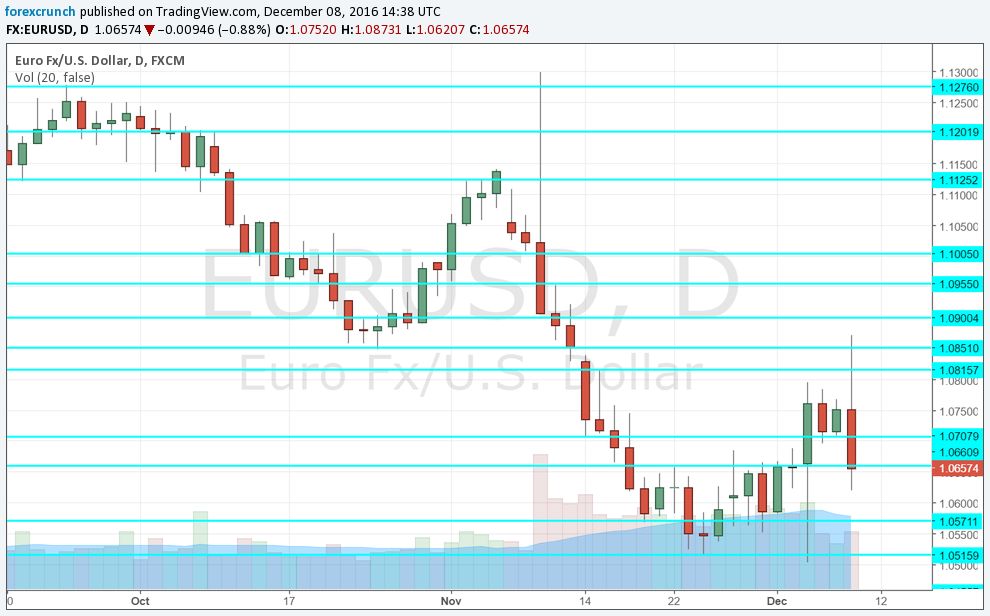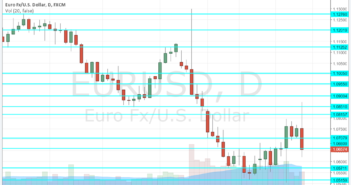After over-promising and underdelivering, Draghi went back to his old self, and slammed the euro hard. At first, the initial headlines screamed “tapering”. Indeed, the ECB will reduce its bond buys from April 2017. However, the rest was very dovish.
Here are the 5 dovish moves made by Mario Draghi, and why the euro could continue falling, especially against the US dollar.
- Reduction, not tapering: This is not the Fed’s gradual removal of any bond buys that went from meeting to meeting, but rather a reduction to 60 billion, the previous level.
- Extended extension: At 9 months, the ECB exceeded expectations for a 6-month extension. The total in extra QE is actually higher: 540 billion instead of 480 billion projected by markets.
- No yield limit: -0.40% is not too low for the ECB under the new rules. From January, the ECB can buy any bonds from 1 year to 30 years that have any kind of yield. This means short-term German bunds which are extremely expensive. Extremely expensive is not too expensive for the ECB.
- Gloomy forecasts: The ECB is expected to fall short of its 2% target even in 2019 and even according to its own projections: only 1.7% is expected. This implies further monetary easing.
- Bearish outlook: Draghi made it clear that the ECB stands ready not only to extend the program beyond December 2017 but also re-expand it beyond 60 billion. Moving in the other direction did not seem like an option. In addition, he warned about downside risks over and over again.
EUR/USD already tanked from the highs of 1.0870 or even from the pre-announcement levels of 1.08 all the way to 1.0620. But there may be more to come.
The ECB made it clear that it is fully dovish. This stands against the Federal Reserve, which is set to raise rates next week. In addition, European governments are not closer to fiscal stimulus, while Trump promises big tax cuts and big spending. Will he keep his promises? We will not know, at least until he enters office.
This puts the recent triple bottom of 1.0520 in danger. Further below, we find the March 2015 low of 1.0460. Below that level, it’s a wide road all the way to parity. Looking up, 1.0710 and 1.0820 serve as resistance.
More: Increasingly confident of EUR/USD parity – DB

